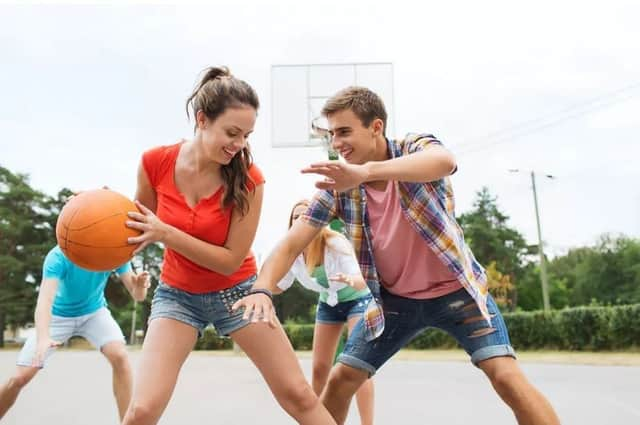Six ways to get teenagers more active '“ suggested by the teens themselves
This article contains affiliate links. We may earn a small commission on items purchased through this article, but that does not affect our editorial judgement.


The UK department of health recommends that young people (aged five to 18) should get at least 60 minutes of physical activity a day. But not enough teenagers actually do.
Advertisement
Hide AdAdvertisement
Hide AdIn schools, children and teens are taught from a young age about the benefits of being active. They should know that it reduces the risk of obesity, coronary heart disease and diabetes, and increases well-being. Yet the lack of teenagers’ activity has become such an issue that it is now a serious public health concern.


Try as they might to implement physical activity schemes for British young people, it seems that the work of public health policy makers is not reaching everyone. Though leading experts are contributing to plans with interventions such as the Daily Mile, we have found a missing link – the teens themselves. Researchers and policy makers play a vital role in designing physical activity schemes, but they often do not speak directly to the groups they want to target.
For our latest project, ACTIVE (The active children through individual vouchers evaluation project), we wanted to give young people the chance to make their own recommendations to help others of the same age be more active now, and carry on being active in the future.
We worked with more than 70 teenagers from seven secondary schools in Swansea to come up with a list of easily implementable recommendations.
1) Lower cost without sacrificing quality


The teenagers we worked with said that lowering the cost of activities would help them become more active. They recommended that more free activities should be available – although teenagers were aware that when places lower their prices, the quality of the activity/venue also drops. One way to tackle this would be to offer activities that do not need coaches or referees but allow teenagers to play freely, making their own games and rules in a safe space.
Working out.Rob Marmion/Shutterstock
2) Make activities local
Removing the need to travel to venues would go some way towards making physical activity more available to teenagers. The teens we worked with said they were happy to organise their own activities if they had facilities close to where they live. They did not mention the need for coaching, just a need for a space to play. All they want nearby is the space to participate in unstructured, non-competitive forms of their favourite sports.


3) Improve the standards of existing facilities
The teenagers all said that their local facilities need to be improved. Spaces, such as local parks, have fallen into states of neglect and equipment is broken. The local council’s maintenance of facilities was frustrating for teenagers. They said that the council should do more to maintain and improve local facilities.
4) Make activities more specific to teenagers
The young people we spoke to also stated that there is very little that specifically invites teenagers to attend, or provides things tailored for them. They believed that council-run services particularly neglected their age group and suggested solutions such as removing age restrictions on some gym classes, such as zumba and spin.


5) Give teenagers a choice of activities
Advertisement
Hide AdAdvertisement
Hide AdLike everyone else, teens don’t want to just be restricted to a small range of sports. The activities they suggested were less traditional – for example, dodgeball, trampolining or going to the gym. But this is not just an issue for local services, the teenagers also said that schools have a lack of choice, too.
The teenagers complained that they were stuck doing the same sports year after year. More girls spoke about the lack of choice than boys, suggesting they were more disengaged with school sport. In particular, girls suggested being able to select the activities they wanted to do at the beginning of the school year through a conversation with teachers or questionnaires.
6) Provide activities that teenage girls enjoy
The teenage girls we spoke to said that if they do not like what is on offer, they will not do it, and would actually prefer to be inactive instead. When talking about different activities, teenage girls said they are more likely to be active if they can do activities they enjoy.
The young women we spoke to said that they enjoyed the local water park, with slides and wave machines, and a trampoline park because “it’s fun”. It might not seem like traditional exercise, but the key here is getting teens to be active, regardless of whether we would traditionally view it as “exercise”.


It is obvious that what is currently on offer is just not helping teenagers become more – and stay – active. But simply by including the teens’ own recommendations in solutions for the future, we might be able to finally solve the national problem of young people being inactive.
Michaela James, Research Assistant and ACTIVE Trial Manager, Swansea University and Sinead Brophy, Professor in Public Health Informatics, Swansea University
This article was originally published on The Conversation. Read the original article.